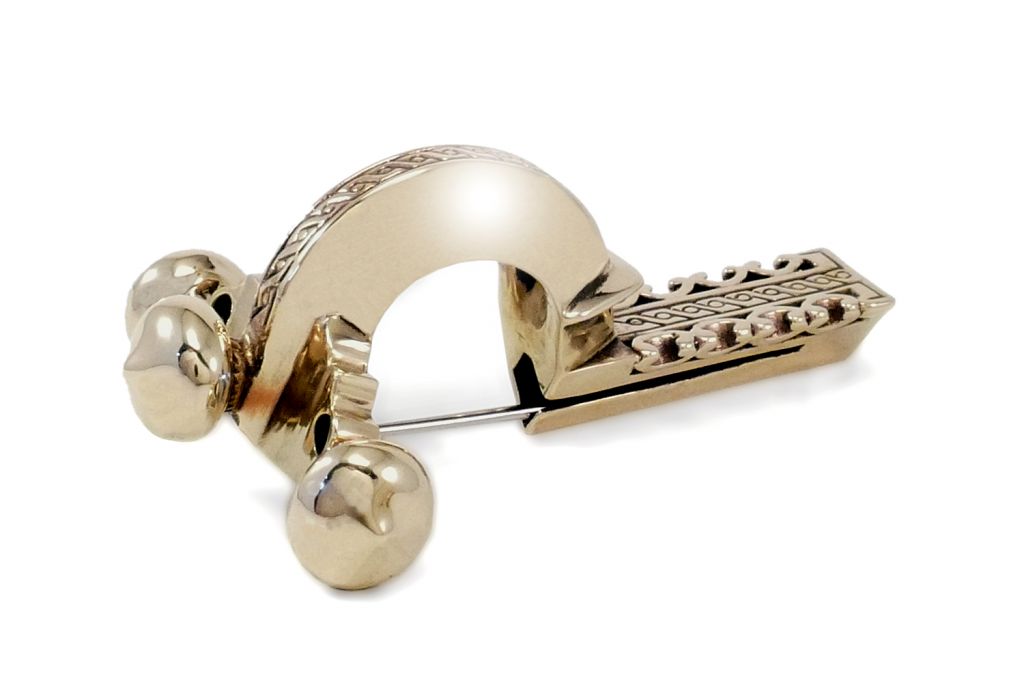Crossbow Brooch Keller 5, Bronze
Late roman crossbow brooch type Keller 5 with onion shaped buttons, made of solid bronze and with a sturdy steel pin. Late 4th to early 5th century.
Late Roman Crossbow Brooch Type Keller 5
Late roman crossbow brooch type Keller 5 made of solid bronze with decorated foot and sturdy steel needle.
On request and for an additional charge, an authentic bronze needle is also possible, but the steel pin is much more resistant, has a greater tension and is thinner with the same stability. Size approx. 80mm.
Late Roman Crossbow Brooch, type Keller 5
While other forms of brooches were worn by both women and men, the crossbow brooches were a gem exclusively for men or soldiers. They served to close the heavy cloak (sagum) over the shoulder.
This form of the military crossbow brooch type Keller 5 enjoyed a great popularity in the late 4th and early 5th century. There were some related types like Keller 2c even at the beginning of the 4th century. On the ivory diptych of the general Stilicho (part of the cathedral treasury of Monza) from the period between 395 and 400 AD also a type-same crossbow brooch is depicted, which underlines the long service life of this type.
Some crossbow brooches of type Keller 5 also come from grave inventories and settlement finds of the early 5th century. Even younger is a fresco from the cubiculum of Theotecnus in the catacombs of S. Gennaro (Naples), which dates back to the mid of the 5th century. This refined form Keller 6 with a narrower foot survives until the middle of the 5th century.
https://www.harvardartmuseums.org/art/310784
Literatur:
M. Proettel, Zur Chronologie der Zwiebelknopffibeln, IN: Jahrbuch RGZM Mainz 1988, Mainz 1991
E. Keller, Die spätrömischen Grabfunde in Südbayern, Münchner Beitr. Vor- und Frühgesch. 14, München 1971
B. Deppert-Lippitz, A Late Antique Crossbow Fibula in The Metropolitan Museum of Art
| Delivery time | 3-4 weeks |
|---|---|
| weight | 0.080000 |
| size | 80 mm |
| Era | Late Antiquity |
| Material | Bronze |
| Kind of replica | Fibulae and Brooches |
| scope of delivery | Delivery in a jewellery case with certificate |

